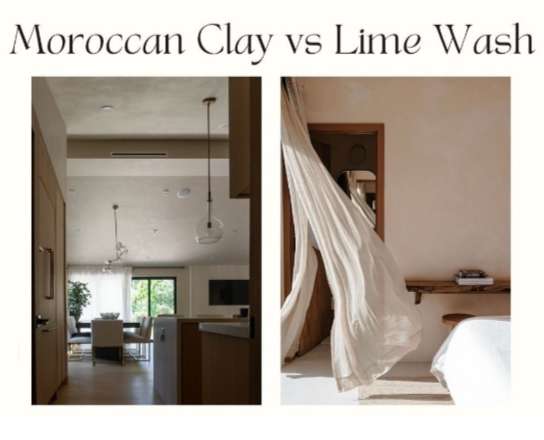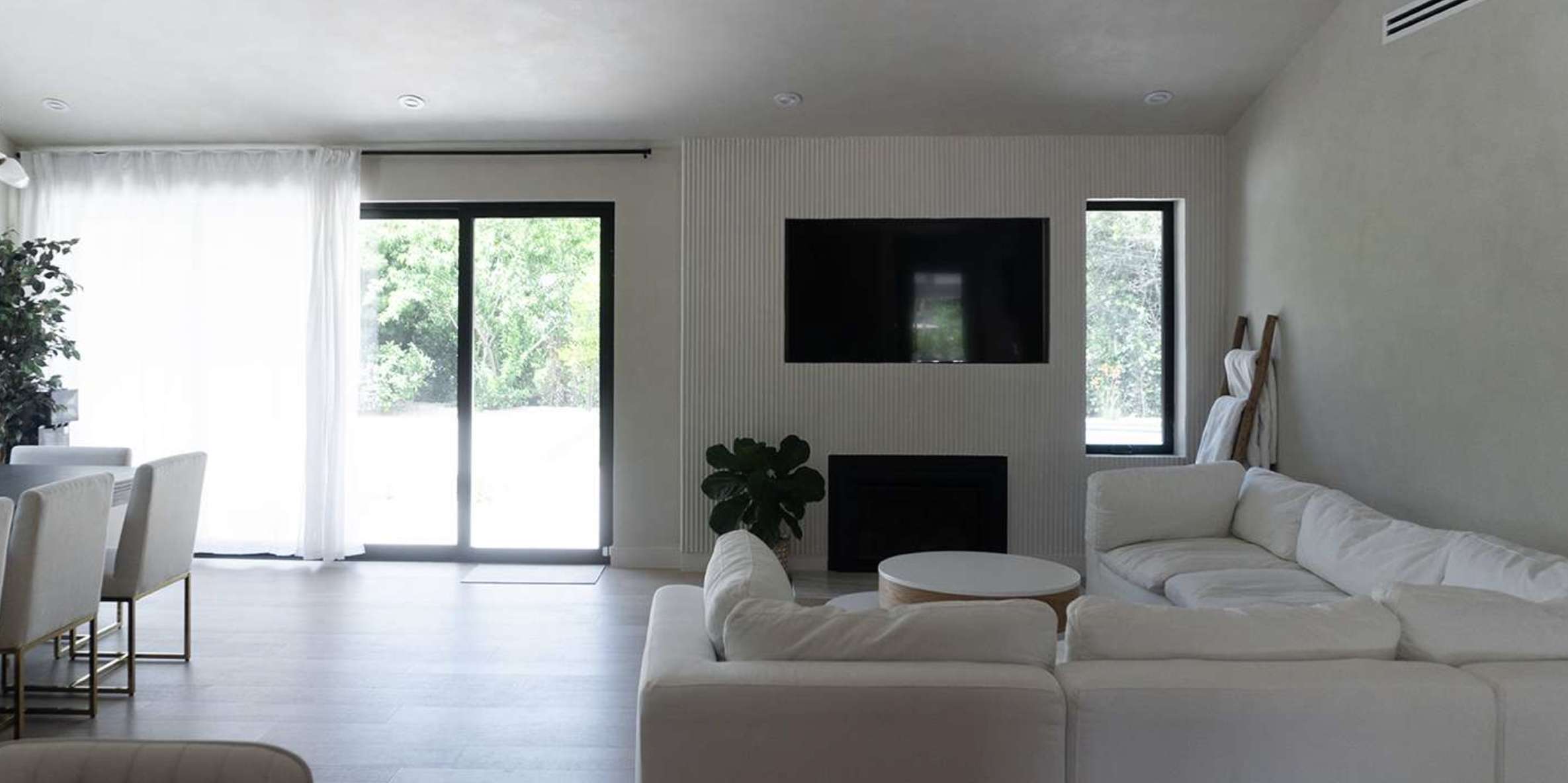
Moroccan Clay vs. Lime Wash: Which DIY Finish is Right for You?
If you’re drawn to the dreamy, mottled beauty of Lime Wash but want a more substantial, forgiving plaster alternative, Meoded’s new Moroccan Clay DIY Matte Plaster offers a compelling upgrade. Both finishes bring timeless, old-world character to modern interiors, but they are completely different products that are applied in two very different ways.
Whether you’re refreshing a feature wall, transforming a bathroom, or creating depth of color or texture in a neutral space, here’s what you need to know to choose the right DIY finish for your next project.
Moroccan Clay vs. Lime Wash
They’re both:
- DIY-friendly
- Applied in 2 Coats
- Matte Finish
- Breathable
- Available in 88+ Curated Colors and can be Custom Tinted
- Great over drywall
Where are they different?
Moroccan Clay is:
- Applied with a trowel or spatula – Smooth Finish
- Durable and made with authentic Clay
- Used with Meoded Quartz Primer and Meoded Stainshield
- Only an interior finish
Lime Wash is:
- Applied by brush in the cross hatch method – Visible Brush Strokes
- An authentic limestone paint
- Dries to a flat finish – cannot be burnished
- You need to apply it over Meoded Lime Wash Base Coat
- Can be applied to Interior or exterior surfaces
- Great for drywall, brick, stone, and stucco
What Is Moroccan Clay?
Meoded Moroccan Clay is an eco-friendly natural clay plaster that produces a matte mottled finish on almost any interior surface.
Formulated with real clay for an effortless application designers and DIYers love, with the added benefit of a truly natural, durable, and breathable finish that lasts.
The ultimate authentic clay, it is the perfect blend of ease, elegance, and authenticity.
What Is Lime Wash
Meoded Lime Wash is a unique, slaked limestone-based mineral paint that creates a beautiful, weathered finish on almost any surface. DIY-friendly and natural, Lime Wash is applied in a simple two-coat process over Meoded Lime Wash Base Coat on drywall. Using a cross-hatch brushstroke technique, this paint creates elegant color variation and a beautifully mottled matte finish.
Beyond drywall, Lime Wash can also be applied to brick, stone, and stucco, adding character and depth to a variety of surfaces.
How to Apply Moroccan Clay (and What is a Trowel)
Moroccan Clay is applied with a stainless steel trowel, a smooth, flat-edged hand tool traditionally used in plastering and masonry. The trowel allows you to spread and smooth the plaster evenly across the wall, control thickness, and create subtle movement and texture with your hand’s motion.
To apply, scoop a small amount of Moroccan Clay onto the trowel, press it onto the wall at a slight angle, and sweep upward or diagonally in thin layers. You’ll typically apply two coats, letting each layer dry before applying the next. The more varied your strokes, the more natural and dimensional the final surface will look. Meoded has several sized trowels to best suit your needs.
Here are 3 tools we recommend for Moroccan Clay:
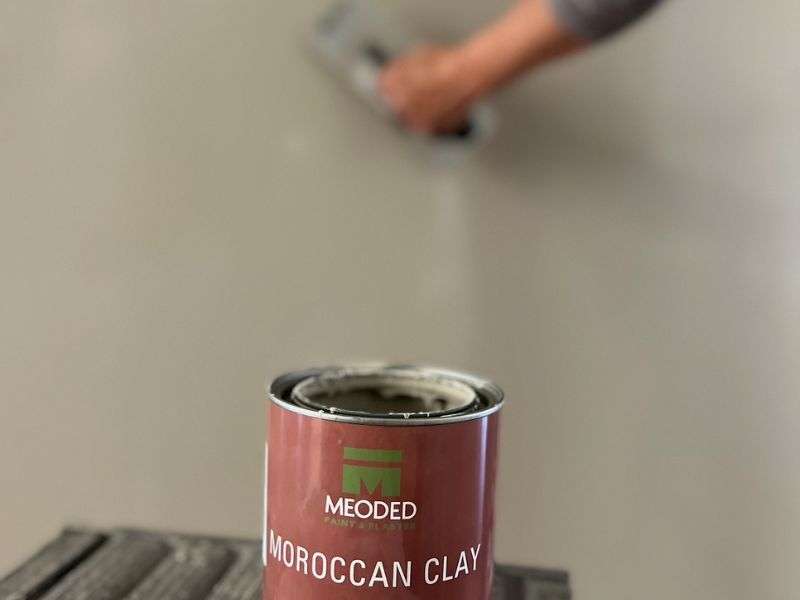
Burnishing: The Finishing Touch of Authentic Clay
Because Moroccan Clay is made with real clay, it can also be lightly burnished once it has dried. Burnishing is the process of gently polishing the surface with the edge of your trowel or spatula to compress the plaster. This adds a subtle, elegant and sporadic sheen to the finish.
While Moroccan Clay naturally dries matte, burnishing introduces a soft, reflective quality that brings out the depth and richness of the clay, and darkens the color in the shinier areas creating a beautiful and bespoke finish.
Pro Color Tip: Maximizing Depth and Movement
With both Lime Wash and Moroccan Clay, lighter colors tend to have more subtle movement. This soft, tonal variation is part of their charm.
However, there’s an old faux finish trick professionals still use to add more depth and drama: mix a light or white main color with a base color that has the undertones you want to highlight—such as gray, beige, or a muted earth tone. That undertone peeking through the finish enhances the layered effect, giving even the lightest color combinations more visual interest and richness.
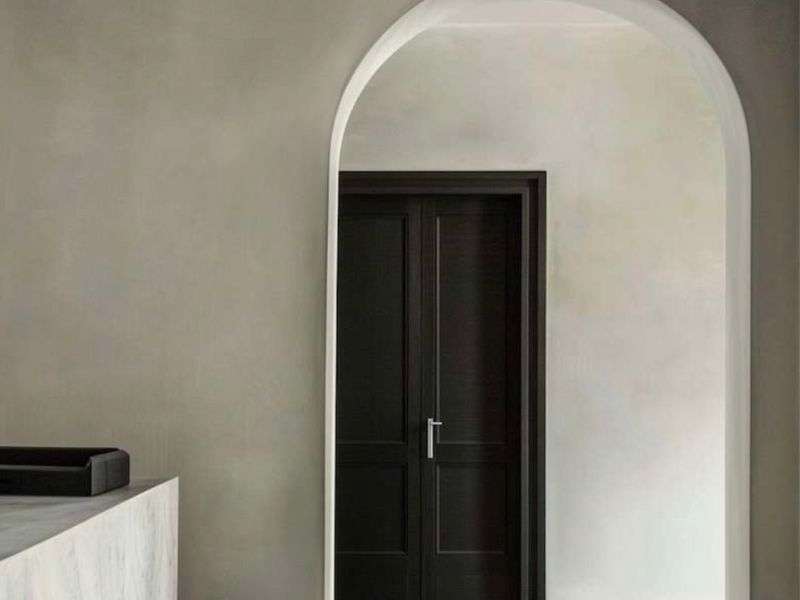
Moroccan Clay or Lime Wash: Which Should You Choose?
- Choose Lime Wash if you love soft, tonal movement and a chalky, old-world patina that looks like it’s been there for decades. It’s perfect for subtle elegance and breathable beauty in living spaces, bedrooms, and low-traffic walls.
- Choose Moroccan Clay if you want more depth, texture, and durability—especially in high-use spaces. It gives you the artisanal look of plaster without the intimidation factor, making it ideal for DIYers seeking a step up from paint.
Both Meoded Lime Wash and Moroccan Clay offer a way to bring timeless, hand-crafted beauty into your home—each with its own distinct character and application style.
If you’re after that airy, romantic, timeworn look, lime wash will never disappoint. But if you crave something a bit richer, more substantial, and tactile—with added durability and the option to burnish for a hint of shine—Moroccan Clay may just become your new favorite DIY finish.
Combine both throughout your home to create a designer look that is as unique as it is welcoming.
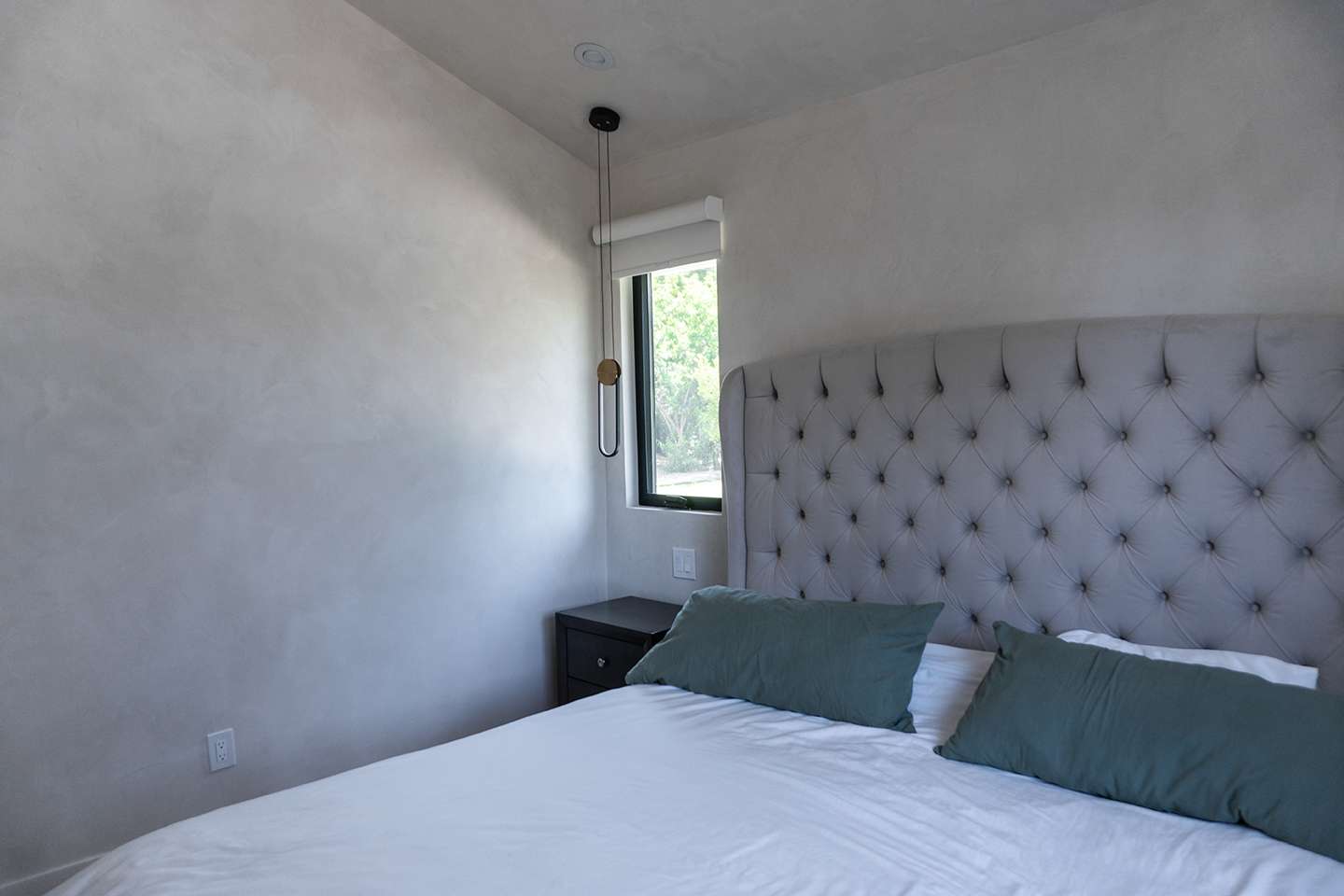
ADDITIONAL FAQs: Moroccan Clay vs. Roman Clay
Q: What makes Moroccan Clay different from Roman Clay?
A: Moroccan Clay is formulated with real clay, which gives it superior strength, breathability, and a more authentic, natural finish compared to many Roman Clay products.
Q: Is Moroccan Clay more durable than Roman Clay?
A: Yes. Moroccan Clay creates a stronger, longer-lasting surface that holds up better in high-traffic areas, making it a more practical choice for everyday spaces.
Q: Does Moroccan Clay cover more surface area than Roman Clay?
A: Absolutely. Moroccan Clay covers about 25% more square footage, which means you’ll use less product overall—making it a more cost-effective choice for larger projects.
Q: How many coats of Moroccan Clay are needed?
A: Thanks to its higher opacity, Moroccan Clay typically requires just a two-layer application to achieve full, even coverage, while Roman Clay often requires additional coats.
Q: Is Moroccan Clay easy to apply for DIYers?
A: Yes! Moroccan Clay is known for its incredibly forgiving application, making it ideal for first-time DIYers and experienced pros alike. It spreads smoothly with a trowel and is easier to achieve a professional-looking finish.
Q: What color options are available with Moroccan Clay?
A: Moroccan Clay is available in 88 curated colors and can also be custom matched to virtually any shade you choose—offering far more flexibility in design and style.


